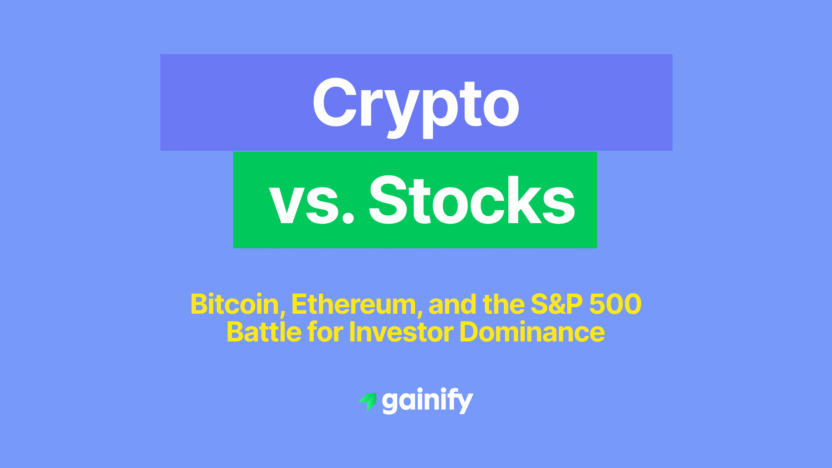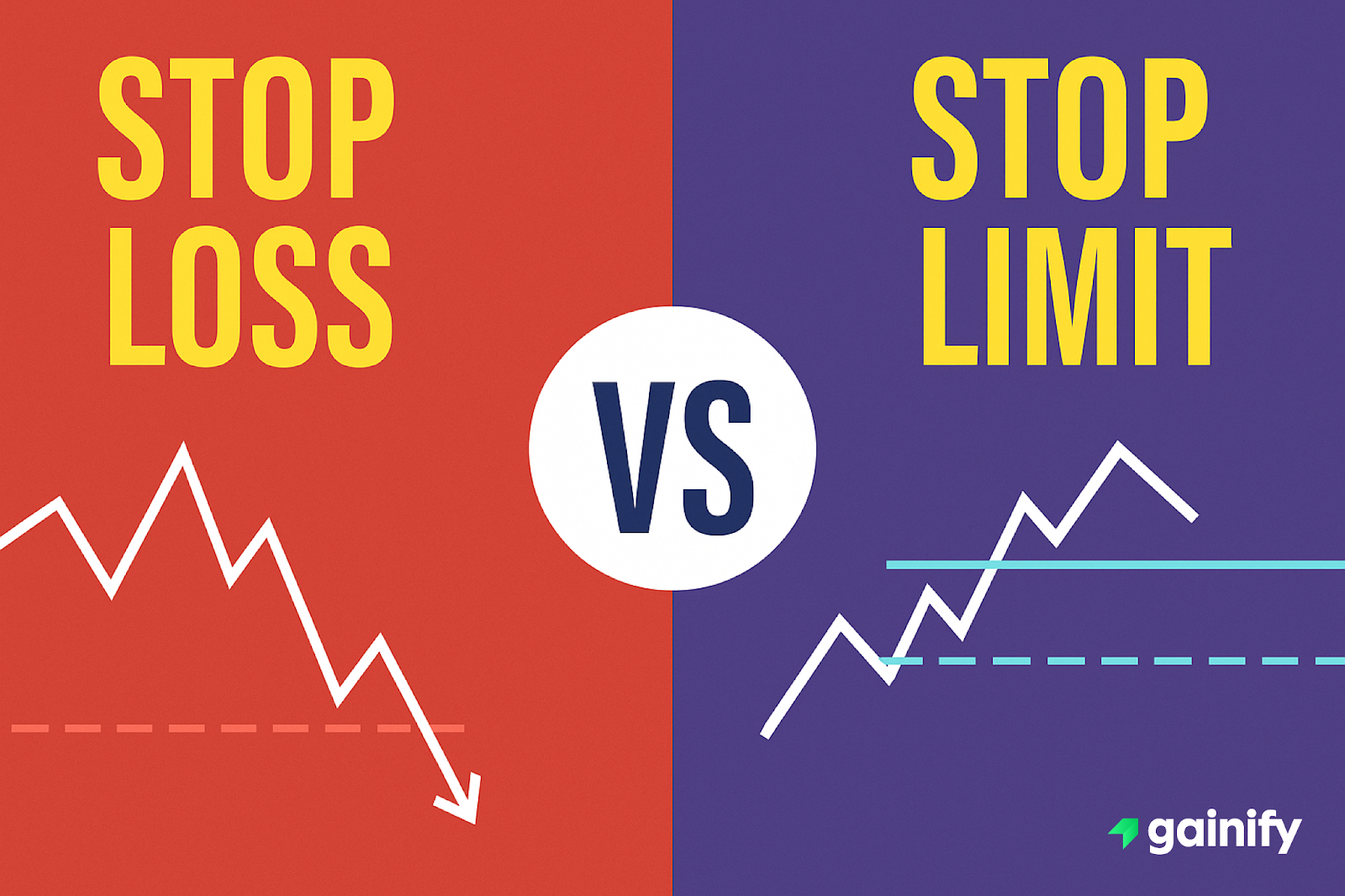For more than a century, the stock market has defined wealth creation. The S&P 500 stood as the measure of global capitalism, compounding through profits, productivity, and the power of innovation. Then came crypto – an entirely new asset class born from code, scarcity, and decentralized trust.
Today, the debate of crypto vs stocks is no longer theoretical. It is measurable. Over the past few years, Bitcoin and Ethereum have delivered returns that have left even the world’s best-performing equities trailing behind.
Fueled by institutional adoption, tokenization, and the explosive growth of AI-related demand for digital assets, crypto has turned from a speculative curiosity into one of the dominant investment stories of the decade.
Yet a new question is emerging.
After this extraordinary stretch of outperformance, the question is whether crypto can maintain its lead or whether equities will prove more resilient, particularly if global conditions become more challenging.
The answer will define how investors think about diversification, risk, and opportunity in a financial world where traditional value and digital innovation are colliding at full speed.
The Numbers Behind the Boom
The past five years have transformed financial markets.
- Ethereum has surged by about 1,613 percent.
- Bitcoin has advanced roughly 1,131 percent.
- The S&P 500 has gained close to 113 percent.
The chart tells the story in one glance. Digital assets have multiplied in value at a pace that traditional stock markets could not match. Stocks have delivered strong, steady growth, but crypto assets have rewritten the scale of returns investors thought possible within a single cycle.
The drivers of these gains differ across worlds.
Equities have thrived on earnings growth and technological innovation. The S&P 500 has been driven by a surge in productivity, fueled by artificial intelligence, data centers, and semiconductor advances. Companies like Nvidia, AMD, and Broadcom have turned computing power into corporate profit.
Crypto’s ascent has stemmed from a mix of scarcity, adoption, and technological progress. Bitcoin’s supply is limited to 21 million coins, creating a structural tailwind for price whenever demand increases. Ethereum’s evolution into the foundation of decentralized finance and tokenized assets has given it real-world relevance far beyond its origins as a digital currency.
The result is a decade-defining performance gap that captures a fundamental shift in how investors view value creation in the digital age.

Crypto vs. Stocks: The Core Differences
Dimension | Crypto Assets (Bitcoin, Ethereum) | Equities (S&P 500 and global stocks) |
Underlying Value | Based on code, network utility, and scarcity. No cash flows or dividends; value arises from adoption, trust, and perceived digital scarcity. | Backed by corporate earnings, assets, and dividends. Value is tied to productivity, profitability, and real economic output. |
Ownership Structure | Decentralized networks run by participants through consensus mechanisms. Holders own tokens, not companies. | Centralized ownership of equity stakes in companies. Shareholders hold legal claims on profits and assets. |
Drivers of Price | Influenced by network adoption, protocol upgrades, supply limits, and liquidity cycles. Prone to momentum and macro liquidity shifts. | Driven by earnings growth, interest rates, valuation multiples, and macro fundamentals. Sensitive to corporate results and policy cycles. |
Regulation and Oversight | Evolving global frameworks with uneven regulation across jurisdictions. Transparency comes from on-chain data, not regulators. | Established regulatory systems ensure reporting, disclosure, and investor protection through entities like the SEC and global equivalents. |
Market Behavior | High volatility, 24/7 trading, and strong retail participation. Returns often follow liquidity waves and innovation cycles. | Lower volatility, market hours defined by exchanges, dominated by institutional capital and earnings expectations. |
Monetary Sensitivity | Correlated with global liquidity and real rates; thrives in expansionary or high-innovation periods. | Sensitive to interest rates and inflation, performing best in moderate-growth, stable-rate environments. |
Value Proposition | Represents a new financial architecture built on open protocols and programmable money. Offers censorship resistance and borderless transfer. | Reflects ownership in productive enterprises that generate real cash flow and economic value. Offers income and governance rights. |
Investment Role | Emerging store of value and growth asset, potential diversifier uncorrelated over long horizons. | Core wealth-building and income-producing asset for long-term portfolios, benchmark for global risk assets. |
How to Decide What Fits You
Choosing between crypto and stocks depends less on prediction and more on personal context. Every investor has a different tolerance for volatility, time horizon, and comfort level with new technology. Understanding your own profile is the first step in finding the right balance.
If you value stability and income: Equities are the natural choice. Stocks provide measurable fundamentals such as revenue, profit, and dividends that align with steady, predictable growth. Long-term investors who focus on compounding wealth with manageable risk often keep the majority of their portfolios in equities.
If you seek innovation and asymmetric opportunity: Crypto offers exposure to frontier markets and emerging technologies. Small positions in assets such as Bitcoin or Ethereum can increase portfolio potential without taking on excessive overall risk. The key is moderation. Crypto should enhance a portfolio built on traditional assets rather than replace it.
If you think in decades, not days: Owning both can create greater resilience. Markets move in long cycles, and leadership shifts over time. Equities tend to outperform when economic growth and policy remain stable. Crypto often excels during periods of monetary expansion, technological progress, or currency uncertainty. Holding both allows participation across these different phases.
If you are new to crypto: Education is more important than allocation. Take time to learn how blockchain networks operate, how wallets and custody work, and how regulations are developing. Begin with small, transparent assets that have strong liquidity and proven security. Treat your initial exposure as an exploration of innovation rather than a short-term trade.
Diversification is not just about owning many assets. It is about owning the right mix of assets that behave differently when conditions change. Combining traditional equities with digital assets offers access to both enduring value and new potential. It is a balance that reflects where global finance is moving and how wealth will likely be built in the years ahead.
Crypto Mining Stocks: Indirect Exposure to the Crypto Market
For investors seeking exposure to cryptocurrency through traditional markets, crypto stocks offer one potential entry point. These publicly traded mining companies operate the data centers and computing infrastructure that power networks such as Bitcoin and, to a lesser extent, Ethereum. Their businesses are highly capital-intensive and closely tied to energy costs, mining difficulty, and crypto prices. In 2025, many miners have expanded into high-performance computing and AI hosting to diversify their operations and build more stable revenue streams.
Top mining companies and their potential exposure to crypto include:
- Marathon Digital Holdings (MARA) – One of the world’s largest Bitcoin miners, holding about 52,477 BTC. Provides exposure to large-scale Bitcoin production and corporate treasury accumulation.
- Riot Platforms (RIOT) – A major U.S. miner with extensive Texas operations and 19,309 BTC held. Offers exposure to low-cost, high-efficiency Bitcoin mining backed by long-term energy contracts.
- CleanSpark (CLSK) – A rapidly expanding U.S. miner focused on renewable energy, holding around 12,827 BTC. Delivers exposure to sustainable, growth-oriented Bitcoin mining.
- Hut 8 Mining (HUT) – A Canadian miner that merged with U.S. Bitcoin Corp in 2023, now holding 10,278 BTC. Provides exposure to both Bitcoin mining and emerging AI computing services.
- Cipher Mining (CIFR) – Energy-efficient U.S. operator with 1,414 BTC held. Offers exposure to cost-optimized mining infrastructure and grid-flexible power strategies.
- Bitfarms (BITF) – Canadian miner powered mainly by hydroelectric energy, holding 1,402 BTC. Gives exposure to ESG-focused, low-cost Bitcoin production.
- BitFuFu (FUFU) – Hybrid Bitcoin miner and holder with 1,899 BTC. Offers exposure to combined mining output and long-term Bitcoin accumulation.
- Hive Digital Technologies (HIVE) – Evolved from traditional mining into a diversified model including Ethereum staking and AI-driven data services. Provides exposure to multi-chain operations and digital infrastructure growth.
Collectively, these companies highlight how investors can gain indirect stock-market exposure to the crypto economy. As mining evolves to integrate renewable energy and artificial intelligence, these firms are transforming from pure Bitcoin producers into broader digital infrastructure providers.
Key Long-Term Trends for Crypto
Crypto has entered a new era. What began as speculation is now evolving into an institutional-grade asset class supported by global regulation, real-world adoption, and rapid technological progress.
1. Institutional Adoption Reaches Scale
Institutional participation has reshaped the market. Since early 2024, spot Bitcoin ETFs in the United States, Europe, and Asia have made crypto accessible to mainstream investors. Major managers such as BlackRock and Fidelity oversee tens of billions in assets, while hedge funds use Bitcoin and Ethereum as liquid macro tools. Custody, insurance, and compliance advances have made institutional exposure both safer and more scalable.
2. Tokenization Becomes the Bridge
Tokenization links crypto to traditional finance. In 2025, global banks launched tokenized bond and fund platforms, allowing instant on-chain settlement. Analysts expect tokenized securities to exceed two trillion dollars by 2030. This shift positions blockchain infrastructure as the operational layer of future capital markets.
3. Regulation and Market Maturity
Global frameworks are now taking shape. Europe’s MiCA rules, the US Digital Asset Market Structure Act, and Asia’s policy leadership have clarified token classifications and exchange standards. Regulation has not ended volatility but has reduced uncertainty, encouraging institutional growth and long-term capital formation.
4. Technology Upgrades Drive Utility
Ethereum’s Dencun upgrade lowered transaction costs and improved scalability, while Bitcoin’s layer-two networks expanded into global payments. These advances mark a shift from speculation to functionality, with networks now supporting finance, commerce, and digital identity at scale.
5. The Convergence of Crypto and AI
AI and crypto are beginning to intersect. Decentralized computing markets now rent GPU power to AI developers, and blockchain tools are verifying training data. This overlap creates a new digital economy where computation, trust, and ownership align.
6. Stablecoins and Payments
Stablecoins have become crypto’s most practical product. Their market capitalization surpassed 250 billion dollars in 2025, driven by global use in cross-border payments and corporate treasury operations. They now function as the connective tissue between blockchain systems and traditional money.
Crypto’s evolution in 2025 reflects adoption, regulation, and utility over hype. It is no longer an experiment but an emerging financial system that complements traditional markets. The coming years will test how deeply this digital infrastructure can integrate with global finance — and how investors will adapt to a world where code and capital move together.
Key Takeaways
1. Crypto and stocks now move in the same global ecosystem. Each captures a different source of value: corporate growth on one side, digital innovation on the other.
2. Crypto has dominated performance. Bitcoin and Ethereum have soared more than tenfold in five years, far outpacing the S&P 500’s 113 percent gain.
3. Diversification requires both. Equities provide stability and income. Crypto adds upside and exposure to new technology. Together they balance growth and resilience.
4. Institutional adoption is changing the game. ETFs, tokenized assets, and clearer regulation are turning crypto into a mainstream asset class.
5. The future belongs to convergence. The strongest portfolios will blend traditional markets with digital assets as code and capital continue to merge.




